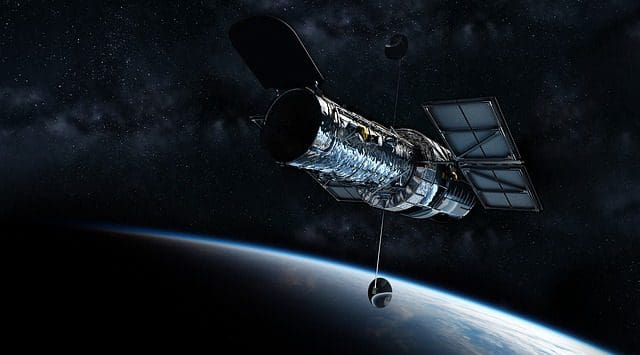
The deployment of mega-constellations and smallsats in LEO is driving the democratization of space and changing how the data flows between the edge and the cloud.
In a 3-part series, we will cover how space computing is following in the footsteps of Industrial IoT by enabling autonomous decision making at the edge of the compute network:
Space computing systems have followed Industrial systems in many ways. They need to be super reliable, work in a harsh environment and last forever. They collect data from sensors at the node, send the data back to the edge and then to the cloud. The architecture was designed for reliability and the lack of a permanent real-time link to the cloud. Once the System was operational it was almost impossible to make any change to the form/fit/function of the system. Think how complicated it is to change the function of a computer sensor. It comes down to: Can we change a module in space?
Example 1: Once in flight: You cannot change the system: Classic example is the Hubble Space Telescope. In this extremely rare case, which was only made possible by being in such a Low Earth Orbit (LEO), a retrofit could be performed by astronauts to correct the spherical aberration that compromised the lens. Four other Space Shuttle missions upgrading/replacing all five of the main instruments were done on Hubble, with the final one being performed in 2009. But again, the exception, far from the norm.
Example 2: Computer Autonomy: Apollo 11 lunar lander. Complete testing and verification of all scenarios on the ground is next to impossible, especially given the constraints of the processing power on the space asset. The repeated crashing of the Apollo Guidance Computer on the lunar lander during its landing forced Neil Armstrong to take control and manually land it.
Example 3: Redundancy: The Space shuttle had four onboard synchronized computers, with a fifth as the backup to allow for 1 real-time onboard computer failure.
Early systems whether Beyond Earth Missions* (L1, L2, Lunar, Mars Orbiters/Landers/Rovers etc) or Near Earth Systems (MEO and GEO Platforms) had 3 main attributes:
As such, the goals of Space Missions Computation: Capture, Store, Forward…and Wait for Action — Collect data from all sensors, store onboard until over ground station and downlink to the ground for post-processing. This is exactly what we saw in Industrial IoT.
And the Computing Required to achieve these missions — Other than limited autonomous redundancy management under strict Concept Of Operations CONOPS, human managed/operated satellite assets. On-Board Processing OBP was leveraged to capture the data for later analysis and to execute the instructions for closed loop management of the satellite Avionics/Command & Data Handling (C&DH)/Data Management Subsystem (DMS) and Payload Subsystems.
In the second post, we will discuss how Gen 2 systems are reducing the data flow from the systems to the base station and how this is a very short step to Gen 3 autonomous systems and what this revolution brings to the table.
